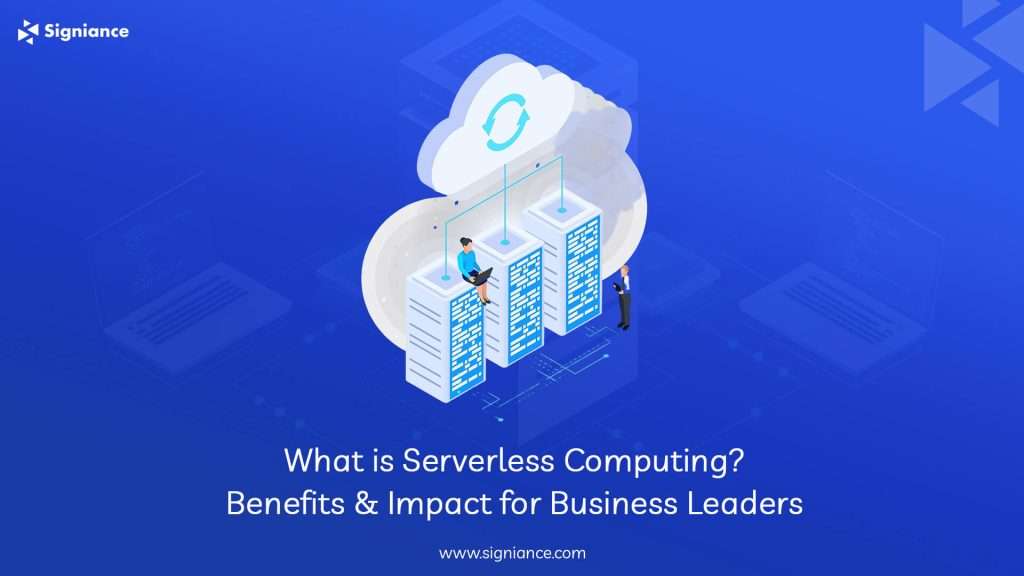
Benefits & Impact For Business Leaders
In today’s digital-first economy, serverless computing is emerging as a key enabler for businesses striving to scale quickly, optimize operational efficiency, and reduce infrastructure costs.
Unlike traditional cloud models, serverless allows companies to run applications without managing servers. This means developers can write and deploy code while cloud providers handle the infrastructure.
For anyone who is successful behind any company, this translates to faster innovation cycles, lower overhead, and improved agility especially in dynamic sectors like fintech, manufacturing, and IT.
Table Of Content
| 1 | The Core Concept Behind Serverless |
| 2 | Why It Matters to Business Leaders |
| 3 | Real-World Use Cases in Key Industries |
| 4 | How Serverless Complements Other Technologies |
| 5 | Common Serverless Platforms |
| 6 | Challenges to Keep in Mind |
| 7 | Is Serverless the Future? |
| 8 | Final Thoughts: Should You Invest in Serverless? |
| 9 | Ready to Embrace Serverless? |
The Core Concept Behind Serverless
Serverless computing is a cloud-native development model that allows you to build and run applications and services without thinking about servers. Despite the name, servers are still involved—but they’re abstracted away from the developer. Cloud providers like AWS, Azure, and Google Cloud handle provisioning, scaling, and maintaining servers automatically.
Key Characteristics:
- Automatic Scaling: Your application scales seamlessly with demand.
- Event-driven Execution: Code runs in response to events (e.g., HTTP requests, file uploads).
- Micro-billing: Pay only for the compute time you use—down to the millisecond.
- No Infrastructure Management: Focus on writing code, not managing infrastructure.
Why It Matters to Business Leaders
For decision-makers, the real question is: how does serverless computing impact business outcomes?
1. Reduced Operational Overhead
With serverless, your teams don’t need to worry about server provisioning, OS patching, or runtime maintenance. This drastically cuts down the time and resources spent on DevOps and infrastructure.
2. Faster Time-to-Market
Speed matters. Serverless enables faster development cycles since your engineers can focus purely on writing application logic. For product teams and CTOs, this means rolling out new features in days not weeks.
3. Cost Efficiency at Scale
Serverless computing uses a pay-as-you-go model. You’re only charged when your functions are executed. No more paying for idle compute power or underutilized infrastructure.
4. Enhanced Agility for Modern Applications
Serverless fits well with agile and DevOps methodologies. Its event-driven architecture makes it ideal for microservices, APIs, and backend logic in modern cloud-native applications.
Real-World Use Cases in Key Industries
Fintech
Fintech companies use serverless to handle real-time payment processing, fraud detection, and dynamic customer insights. It’s highly scalable, compliant, and cost-effective.
IT & SaaS
IT service providers and SaaS platforms benefit from serverless architecture for continuous deployment pipelines, chatbots, user authentication, and data analytics.
Manufacturing
Serverless supports IoT integration and automation of predictive maintenance systems in manufacturing environments. Data collected from sensors is processed in real-time using serverless workflows.
How Serverless Complements Other Technologies
– Containerization:
Serverless and containers are not mutually exclusive. Serverless is best for short-lived functions, while containers are great for long-running apps. Hybrid cloud environments often use both.
– DevOps & CI/CD Pipelines:
With tools like AWS Lambda, Azure Functions, and Google Cloud Functions, serverless naturally integrates into CI/CD workflows, automating deployments, testing, and error monitoring.
– Machine Learning:
Serverless backends can host APIs for inference and data pipelines, enabling AI-driven decision-making with minimal infrastructure.
Common Serverless Platforms
- AWS Lambda
- Azure Functions
- Google Cloud Functions
- IBM Cloud Functions
- OpenFaaS (Open Source)
These platforms come with integrations for logging, monitoring, security, and data storage—all essential for enterprise-grade deployments.
Challenges to Keep in Mind
Despite its benefits, serverless has a learning curve and isn’t ideal for every use case. Consider the following:
- Cold Starts: Delay during initial function invocation
- Debugging Complexity: Distributed architecture makes debugging harder
- Vendor Lock-in: Heavy reliance on a single cloud provider can be a risk
- Limited Runtime Execution: Serverless functions may be restricted in execution time or memory
To overcome these, companies often use serverless in conjunction with traditional and container-based infrastructure.
Is Serverless the Future?
According to recent Gartner and IDC reports, serverless adoption is growing rapidly, especially among enterprise and mid-sized organizations. The promise of streamlined operations and reduced infrastructure headaches is too attractive to ignore.
Final Thoughts, Should You Invest in Serverless?
Serverless computing isn’t just a trend—it’s a strategic move. If your company is building cloud-native applications or modernizing legacy systems, serverless offers a competitive edge through lower costs, greater flexibility, and faster go-to-market speeds.
But like any technology, it’s not a one-size-fits-all. Consider your specific business needs, security requirements, and existing infrastructure before jumping in.
Ready to Embrace Serverless?
If you’re exploring cloud modernization and want to know how serverless computing can fit into your business strategy, we can help. Visit our in-depth serverless guide and get expert insights tailored for decision-makers:
